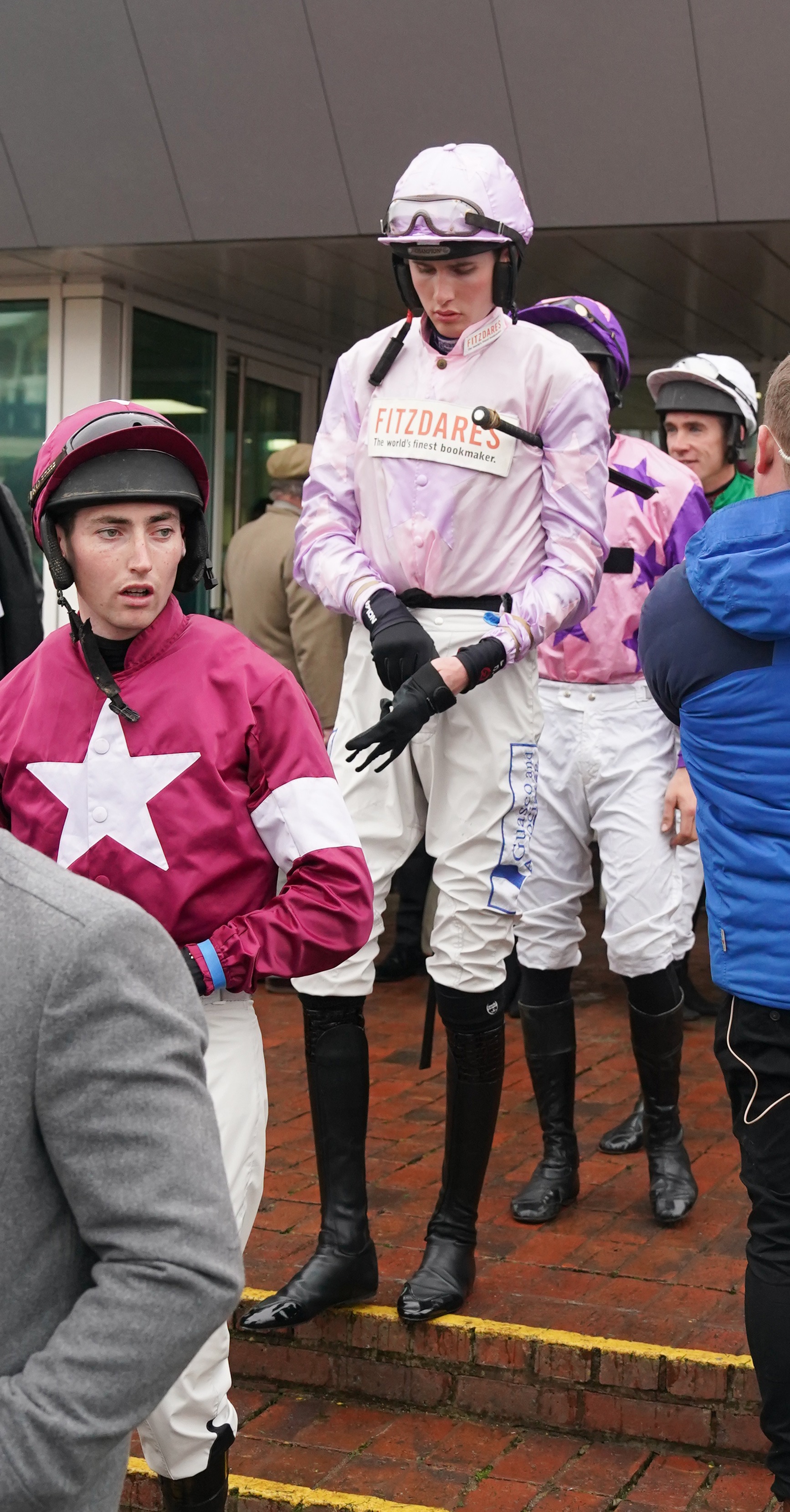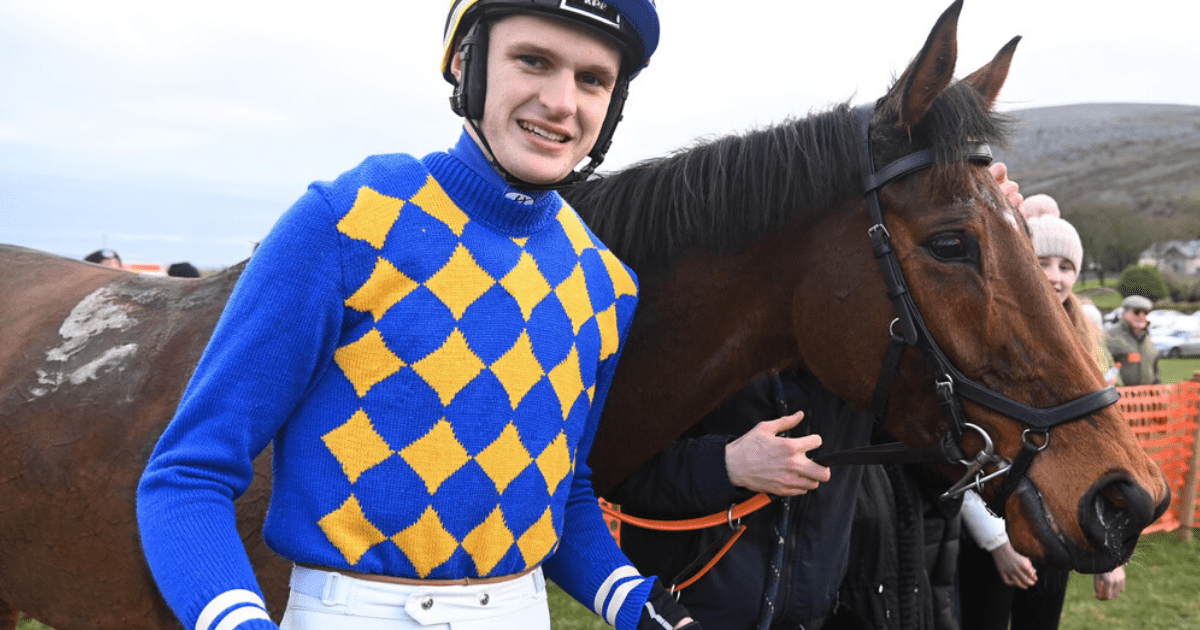'Exceptional' Outsider Secures Thomas Costello's First Race
An amateur jockey believed to be the tallest in the world, Thomas Costello, is set to ride for top trainer Willie Mullins in the first race at the Cheltenham Festival. Costello, standing at an impressive 6ft 4ins, will be on the back of the outsider Asian Master in the Supreme Novices' Hurdle.
Costello's Giant Opportunity
Despite the odds stacked against him at around 25-1, Costello has already ridden Asian Master to victory in the past two runs. The duo is aiming to surprise everyone in the Grade 1 opener on Tuesday.
More Tall Riders in Action
Joining Costello in the tall jockey club is Jack Andrews, also standing at 6ft 4ins. Andrews will be riding the progressive Henry's Friend in the National Hunt Chase, looking to capitalize on their recent success.
Family Legacy and Racing Connections
Costello comes from a family with deep roots in the racing world, with his grandfather having sourced the legendary Gold Cup winner Best Mate. Mullins, a renowned trainer, has also benefited from Costello's family connections, including the champion horse Florida Pearl.

The Challenges of Being a Tall Jockey
Being exceptionally tall poses challenges for jockeys like Costello and Andrews, particularly in managing their weight. Andrews shared his strict daily routine to keep his weight under control, emphasizing the sacrifices made for success in the sport.
Looking Ahead
With the Cheltenham Festival fast approaching, Costello and Andrews are gearing up for their races, aiming to make an impact on the biggest stage in horse racing. The dedication and determination of these tall jockeys are set to be on full display at the prestigious event.
Frequently Asked Questions
How can I learn the racecards?
The racecard provides important information about the race, the horses and their trainers. A racecard lists the following details: the horse’s age, weight, trainer, jockeys, past form figures, and the color of silks worn by jockeys. Learning to interpret this data can help you gauge each horse’s chances and make more informed betting decisions. As part their customer service, most racecourses or betting services provide guides to help you read racecards.
What is the UK horse racing ‘Classics?
Classics refers to the five most prestigious races in UK thoroughbred racing. These are usually considered the best contests of three-year-old horses. The 2,000 Guineas is one of them. The other four are The Epsom Derby and The Epsom Oaks. Wining one of the Classics is a great achievement for a racehorse. And winning all three races of a gender is rare and historic.
How do racehorses are bred and chosen for racing purposes?
The goal of breeding racehorses is to produce horses that excel on the racing track. Breeders select sires and dams with proven racing pedigrees, aiming to produce offspring with optimal characteristics for speed, endurance, and temperament. Thoroughbreds are most commonly associated with racing in the UK, and their bloodlines are carefully recorded. Prospective racehorses often go through a selection process that includes pedigree analysis, physical conformation assessments, and performance in training before they begin their racing careers.
What is the meaning of ‘Going?’ in horse racing
The condition of a racecourse’s surface the day before a race is referred to as ‘going.’ It can have a significant impact on the performance of horses and the outcome. The Going’ is a range of conditions, from heavy (indicating a soft, wet surface) to firm (indicating a dry, hard surface). There are several gradations in between, such as soft, good to soft, good, good to firm, and hard. Trainers and jockeys should consider the “Going” when choosing racing equipment and strategy, including the type of horseshoes to use for better grip.
What does ‘photofinish’ in horseracing mean?
Two or more horses crossing the finish line at the same time can result in a photo finish.’ This is because it’s difficult to see the winner. In these cases, race officials use finish-line cameras that take images at high speed to determine the exact moment each horse’s nose crosses the line. The photo finish helps officials determine the official finish order accurately.
How does handicapping work in UK horseracing?
In UK horseracing, the handicap system gives every horse an equally good chance of winning. Essentially, horses are assigned different weights to carry during the race based on their past performances. Better horses carry heavier loads to even the playing field for horses with less impressive past performances. The British Horseracing Authority in the UK is responsible to update ratings after the race results.
Statistics
- The Royal Ascot, held annually in June, draws crowds of 300,000 over its five-day meeting.
- British racing oversees around 1,500 fixtures annually across its 59 racecourses.
- Around 14,000 thoroughbred foals are born each year in the UK with the goal of becoming top racehorses.
- The prize money for the Epsom Derby stands at approximately £1.5 million, with the winner taking home a substantial portion of this sum.
- British horse racing generates over £350 million in annual tax revenues for the UK government.
- The annual Cheltenham Festival has an economic impact of over £100 million for the local Gloucestershire economy.
External Links
thejockeyclub.co.uk
ascot.com
racingpost.com
racingtv.com
thejockeyclub.co.uk
britishhorseracingmuseum.org.uk
How To
How to Join a Horse Racing Syndicate in the UK
In the UK, joining a syndicate allows you to own a racehorse collectively and share in the cost and experience. You can join a horse racing syndicate by researching different ones to find a match for your budget. Syndicate managers organize visits to the trainer’s yard, the races and oversee the training and care of the horses. You’ll need to decide on your level of commitment and how much money you can afford, since this will vary from syndicate-to-syndicate. Be sure that you complete all paperwork, such as agreements on ownership, liability, and decisions regarding a horse’s racing and welfare.

